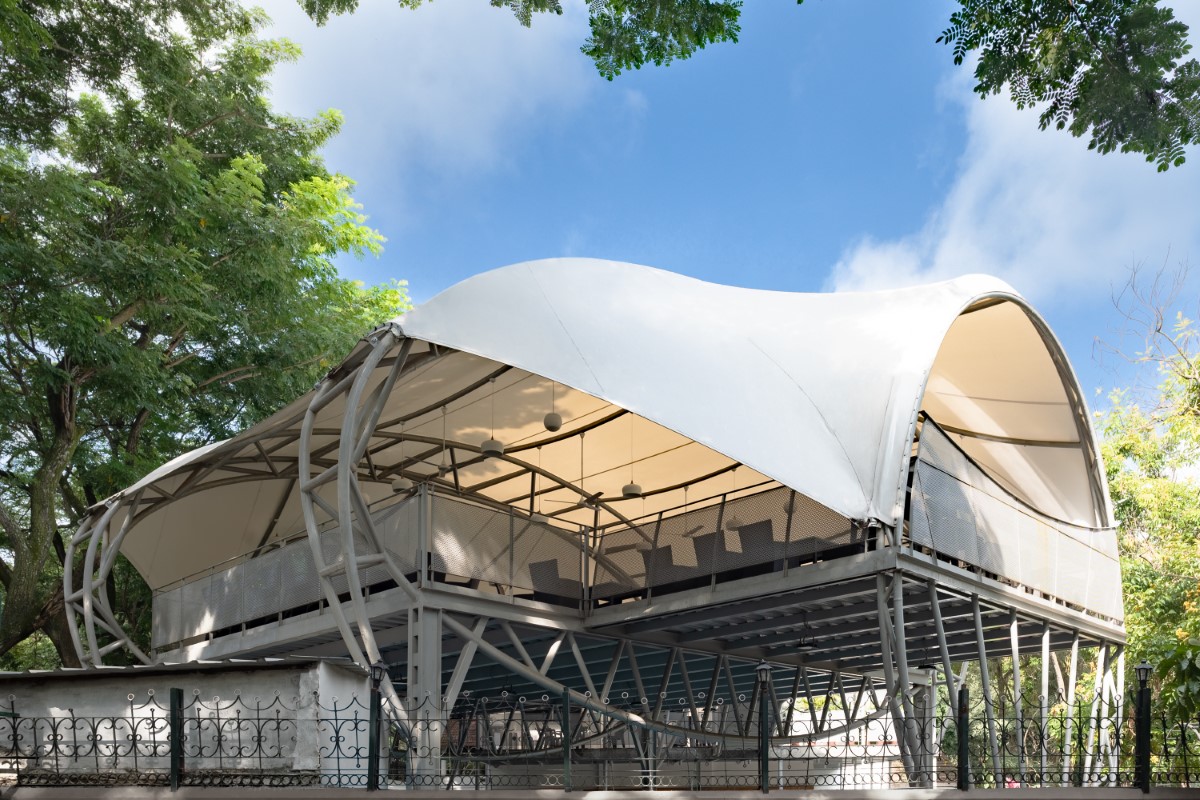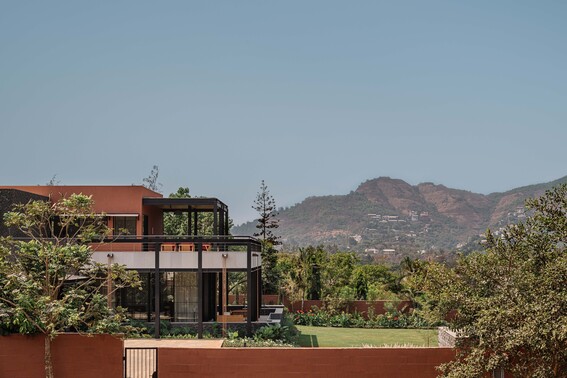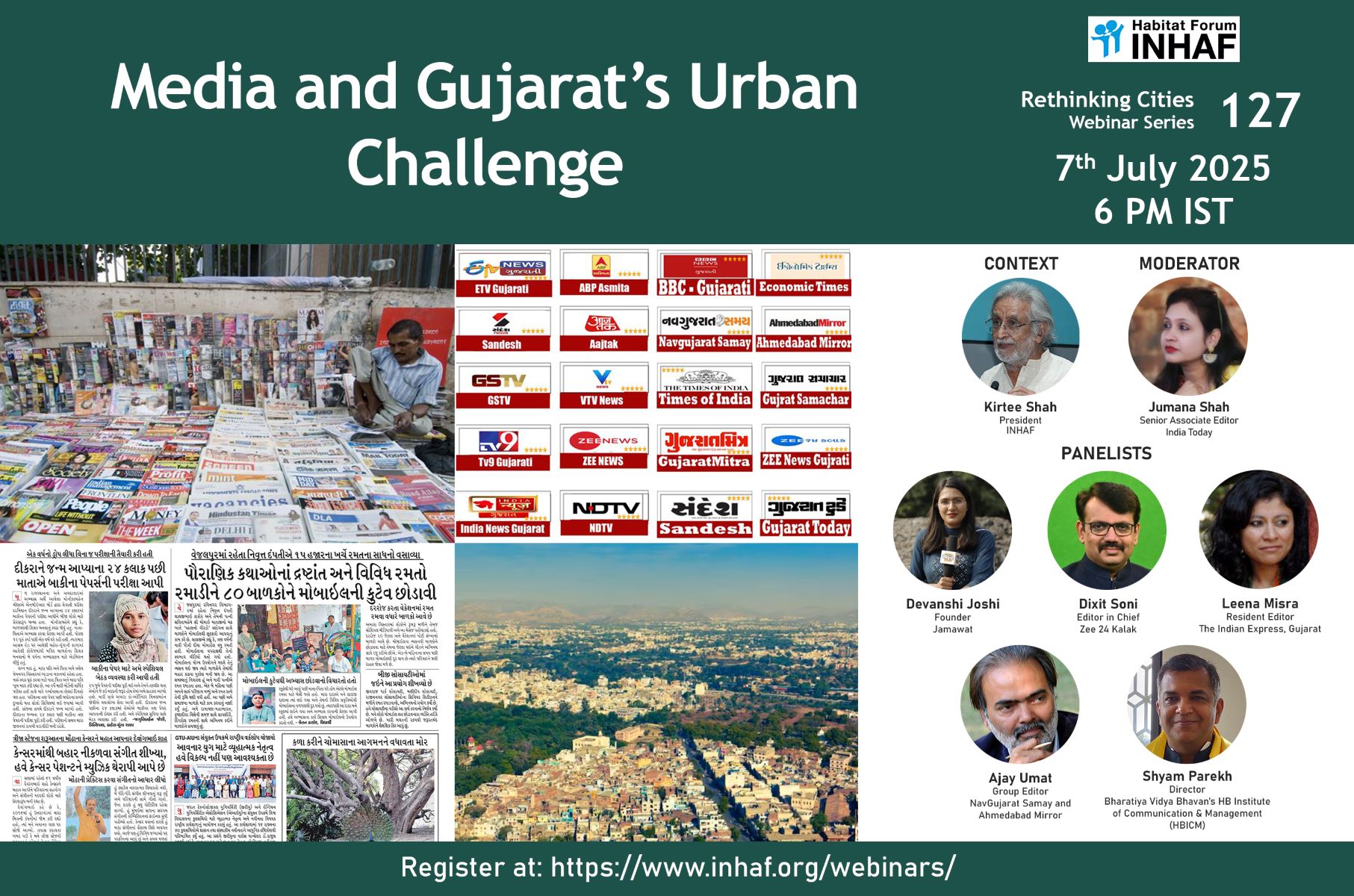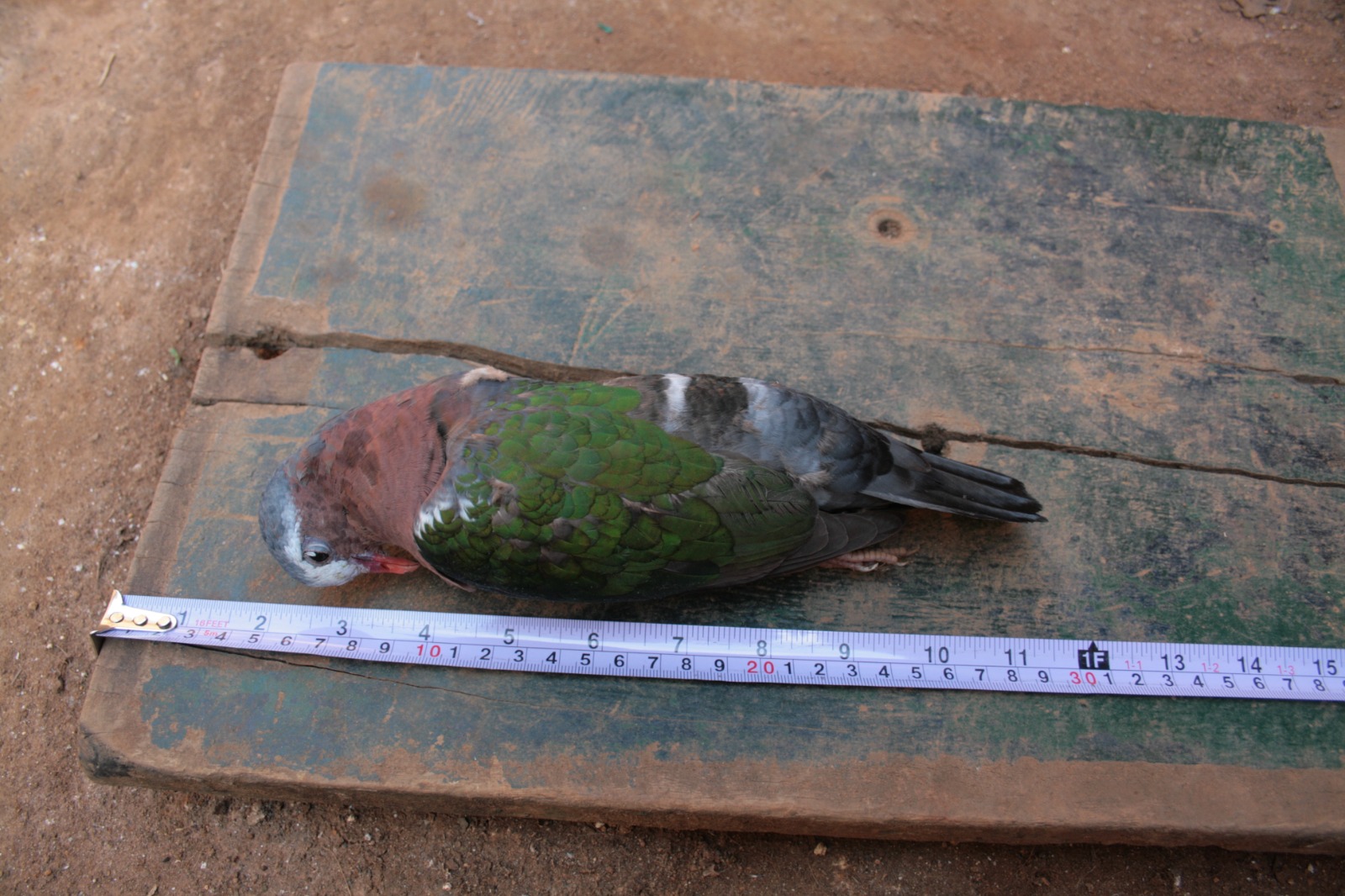Dolkhar, Leh- Luxury boutique resort designed by Emara
The ‘Dolkhar’, a luxury boutique resort located in the Leh town of Ladakh, is a heavenly adobe- on one side flows the river Indus and on the other stands the gigantic Himalayan range. Dolkhar, before being renovated and restored into a boutique resort, was a home and place of residency to the Gogi family, covered in the shade of Apple and Cherry blossom orchids (which, if one happens to visit in the right season can still be enjoyed) for over one hundred and fifty years.
This particular ‘khangpa’ (a place of residence and social unit in the local dialect) had a summer floor and a winter floor with large traditional windows placed throughout the structure helping the building stay warm and cool, naturally, in the respective seasons. During the reconstruction, Emara was commissioned to design the reception building with a restaurant, a SPA, a yoga room and a small bar.
The challenge was to build a space which goes along with the ethos of the resort and is a reflection of the traditional construction practices of the area. An attempt was made to design and construct a structure by the use of locally available materials, with the purpose to conserve the local ecology- compressed stabilised earth blocks (CSEB), local willow, and repurposed wood specifically used for roofing, traditional columns and beams, providing the needed structural support to the building, wall lights, were used. The clay used for plastering the walls was sourced from the mountains of Spituk and Basgo, which on the passive solar structures offers a natural thermal, moisture and noise regulator. The interior space was designed as a visually warm, neutral and comfortable space with sombre soft hanging statement lights placed under the custom-weaved banana fibre case and mud-plastered ochre walls.
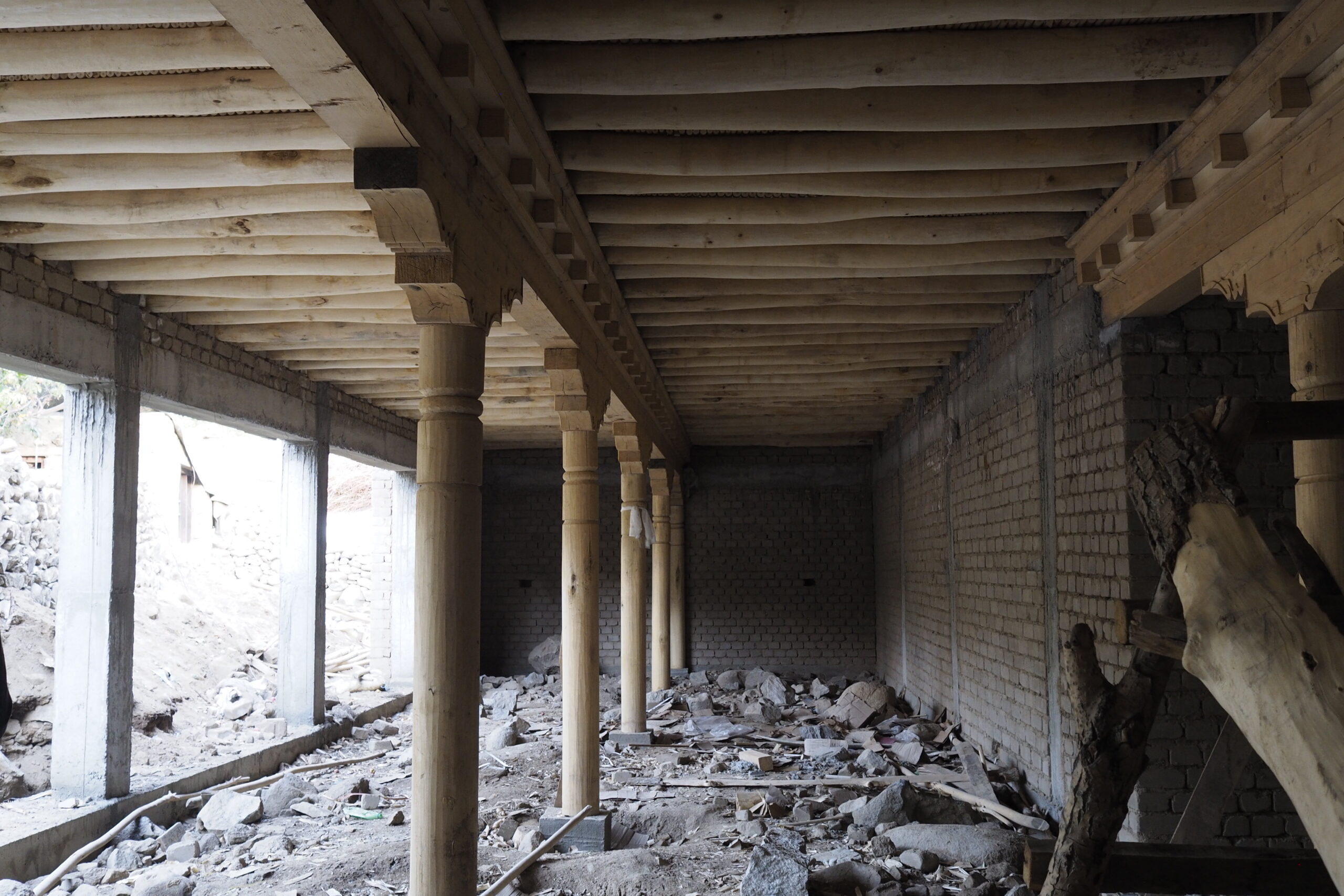
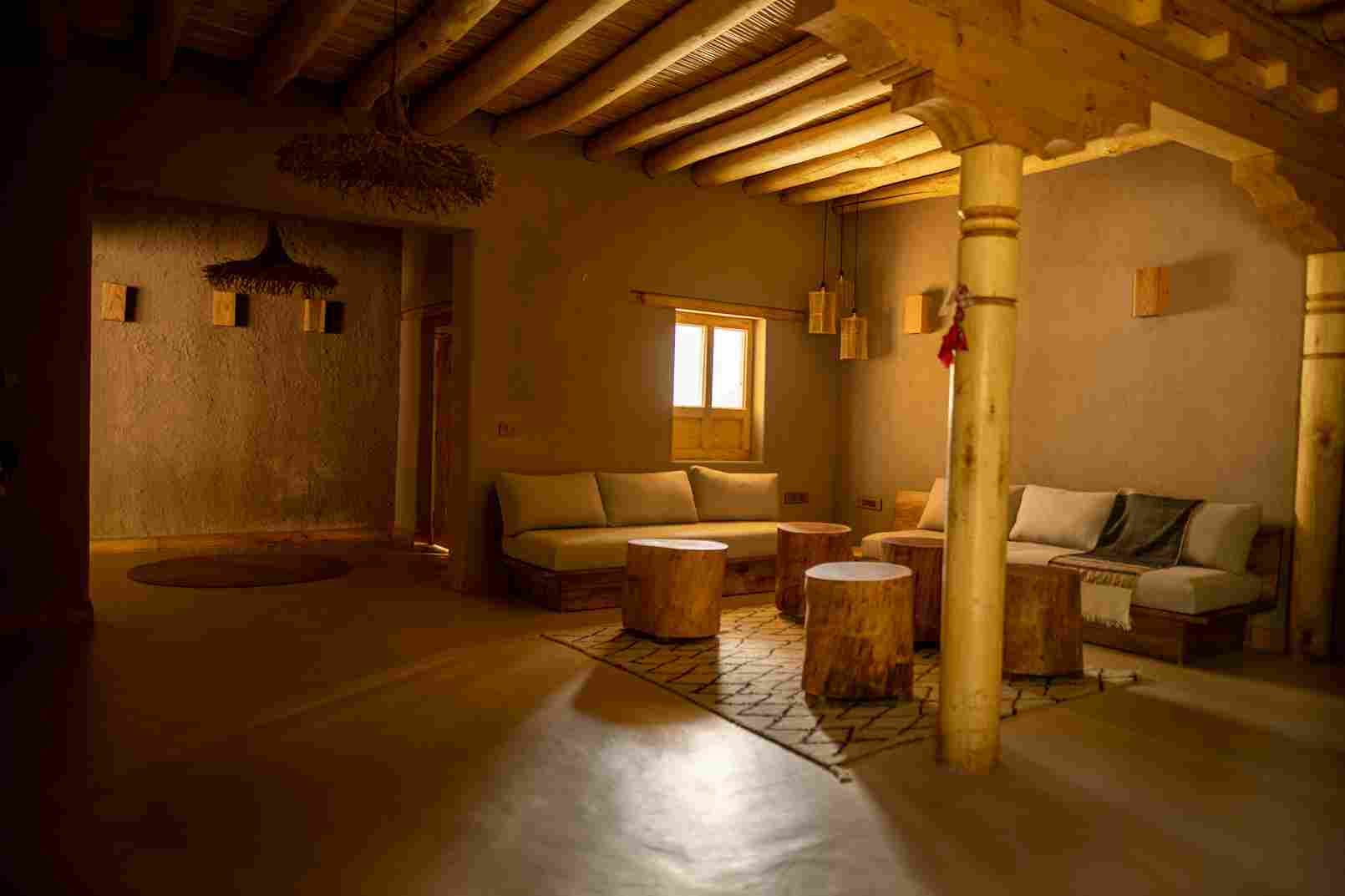
As part of the process, we ensured to gain wisdom and insights on traditional construction techniques from the artisans and community members. This exercise was undertaken by having simple dialogues and gathering an understanding of the traditional values that help design as well as define a space in the region. Adding further, local artisans were commissioned to work on elevating the space with their craftsmen skills. The collaboration with the local craftsmen helped create a range of products like cutlery, likir pottery, which was showcased as an element at the property.
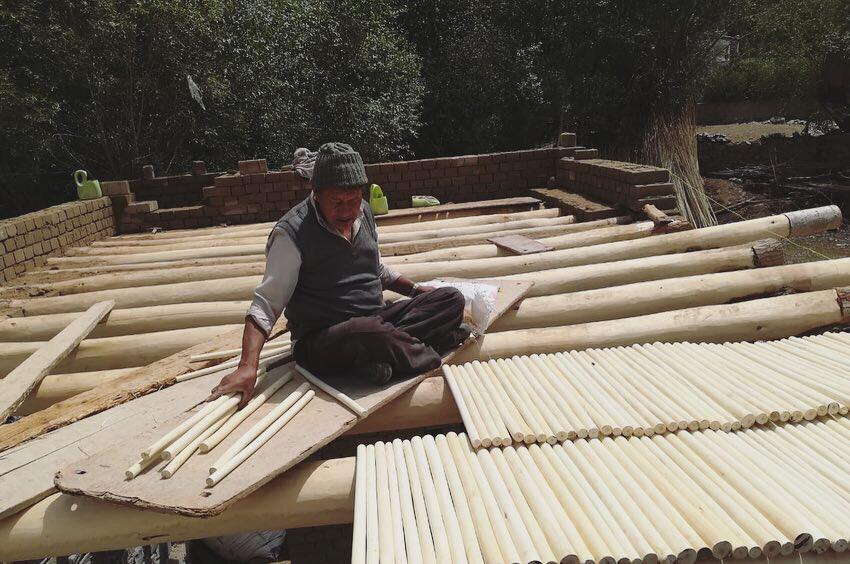
Through this journey of 3 years in creating the space at Dolkar, Emara tried to understand and bring forward the importance of conserving, designing and developing spaces through cultural wisdom. We believe that indigenous knowledge and technology-based practices are the best way forward to help create eco-friendly sustainable spaces, which resonate with the calming landscape of the geographical region i.e Ladakh and are also a means to keep the local wisdom alive and generate employment opportunities for the localities and a platform to merge it with modern technology, in providing more resilient and safer structures.
Hence, It is only conscious development that enables practices that are both relevant and sustainable. And Dolkhar is in every form inspired by the culture, community and traditional values of the region- a luxury boutique stay, integrating a little piece of Ladakh with the rest of the world, while maintaining the central values of conscious, sustainable, and contextual travel.
Gallery
Project Facts
Architect: Shiekh Intekhab Alam
Structure: Nazir Din
Carpenter: Gyalson
Category: Hospitality















